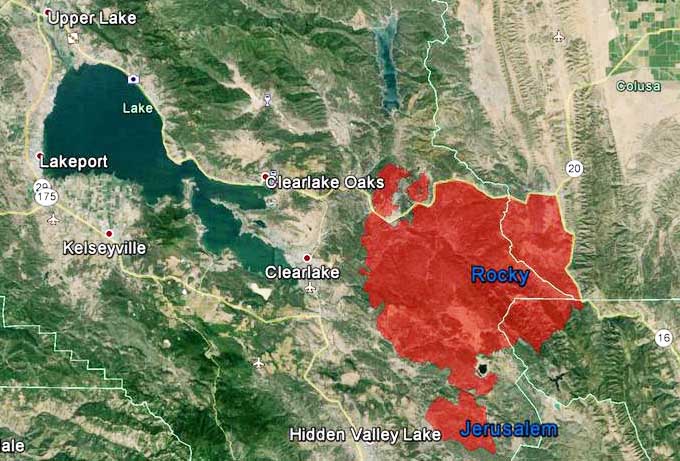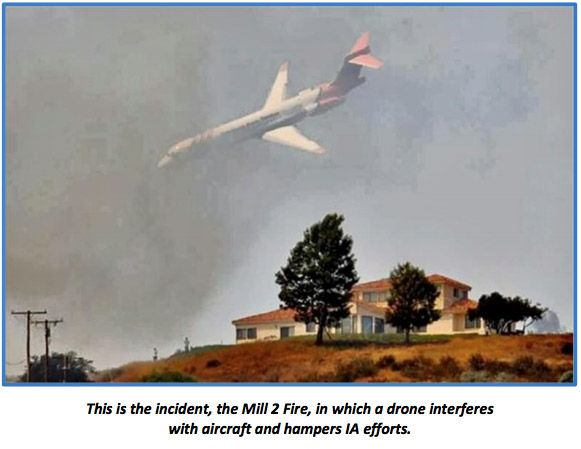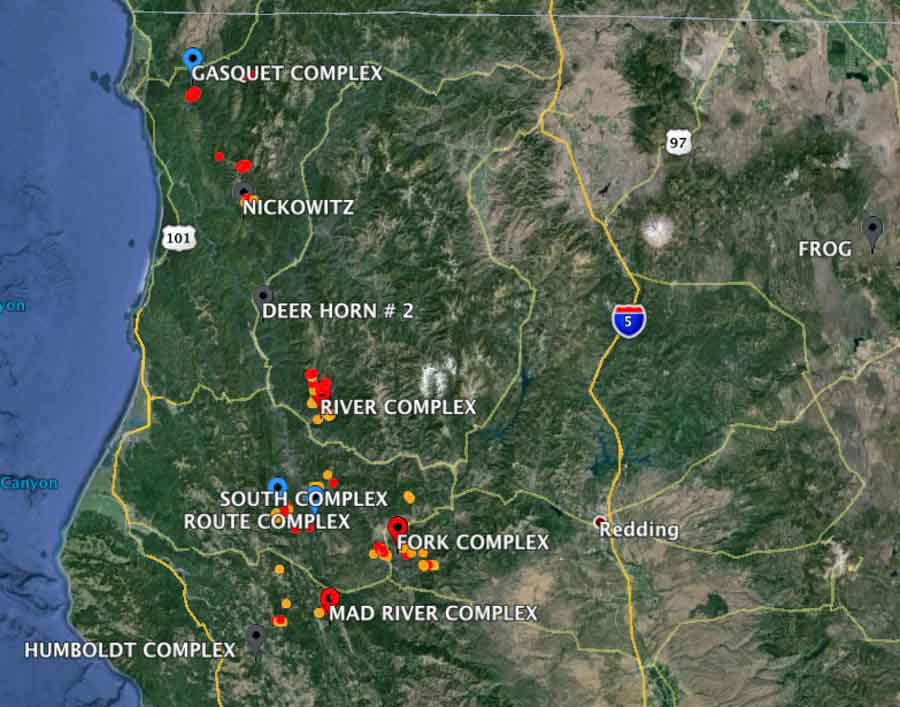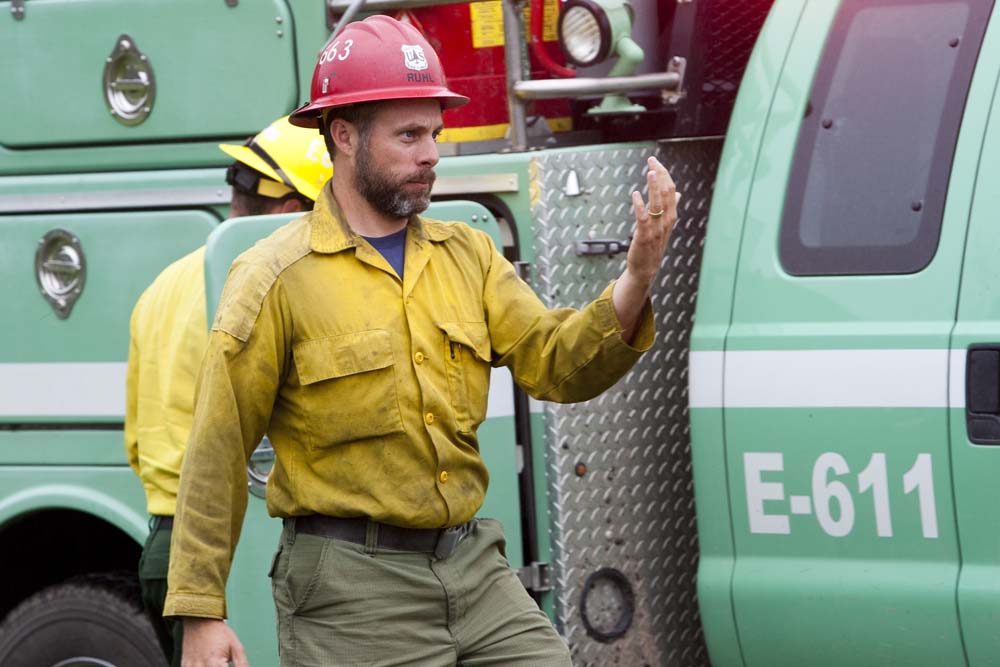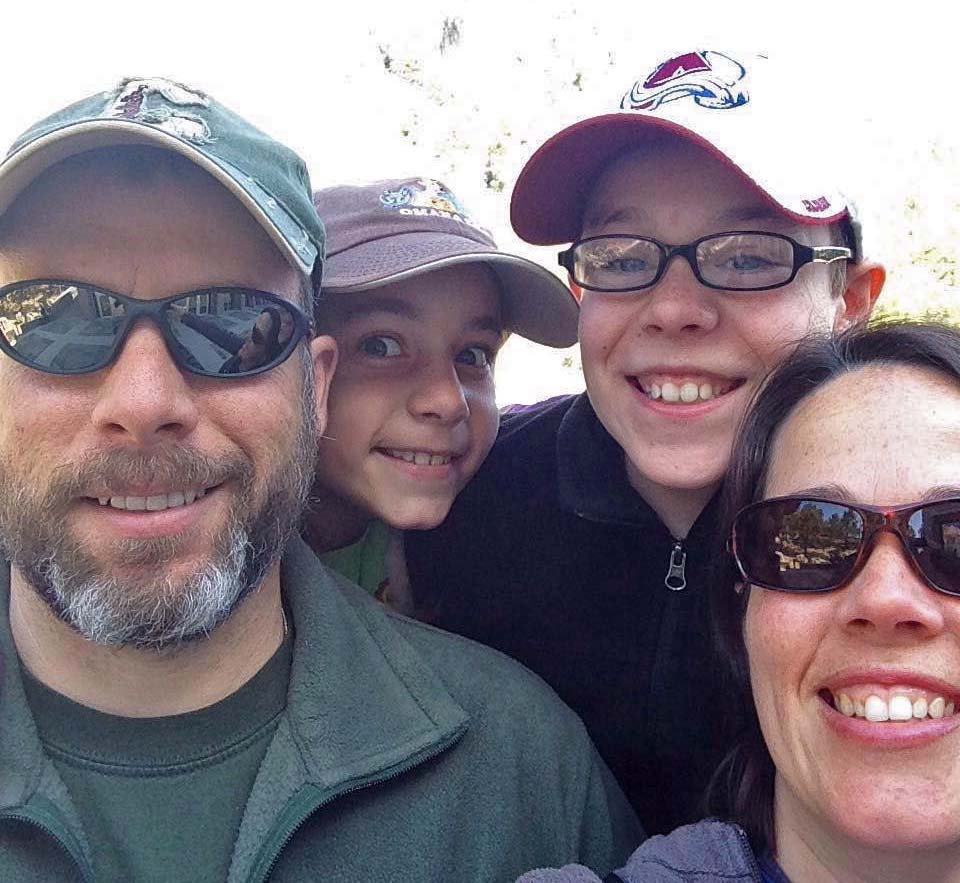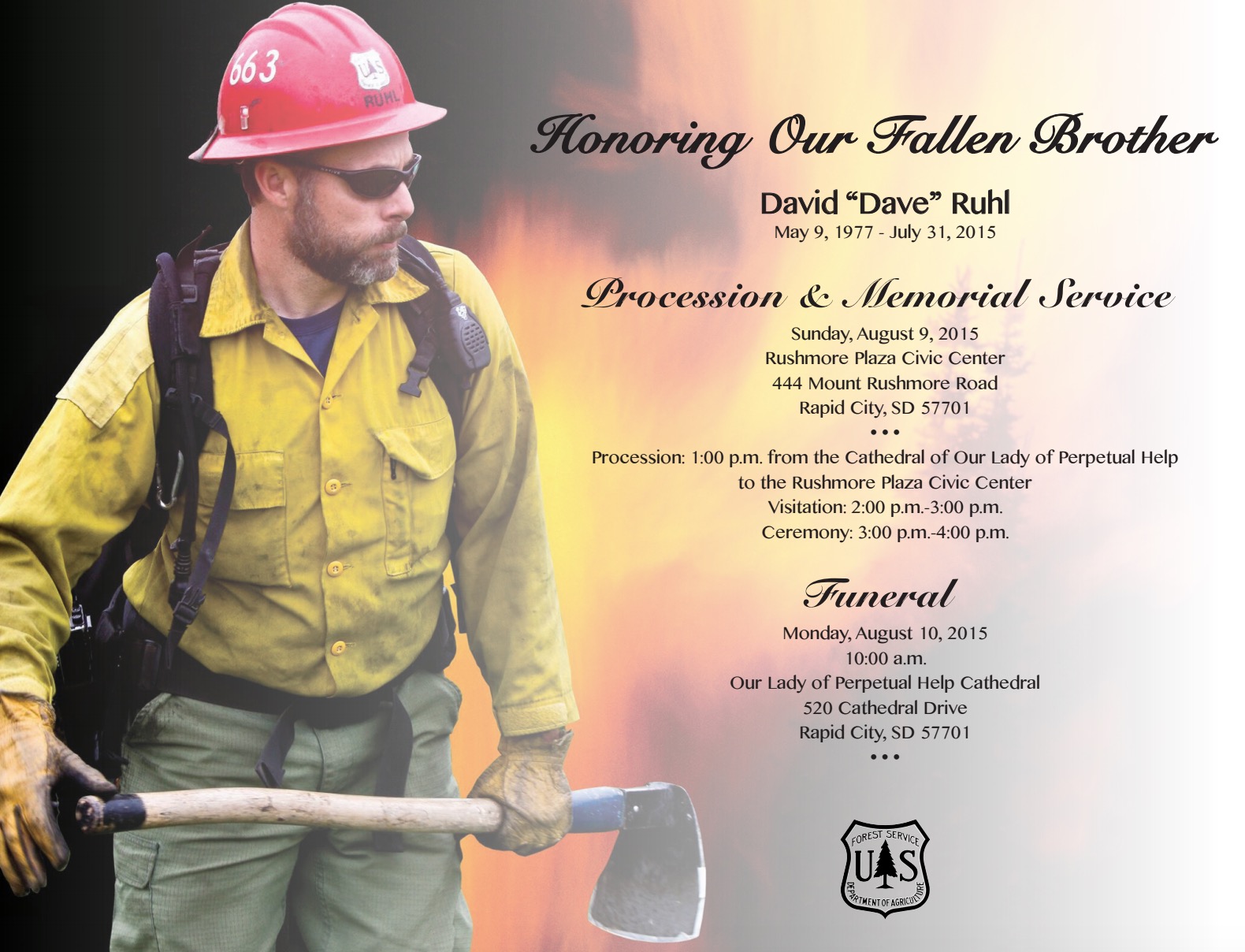(UPDATED at 8:30 a.m. PT, August 13, 2015)
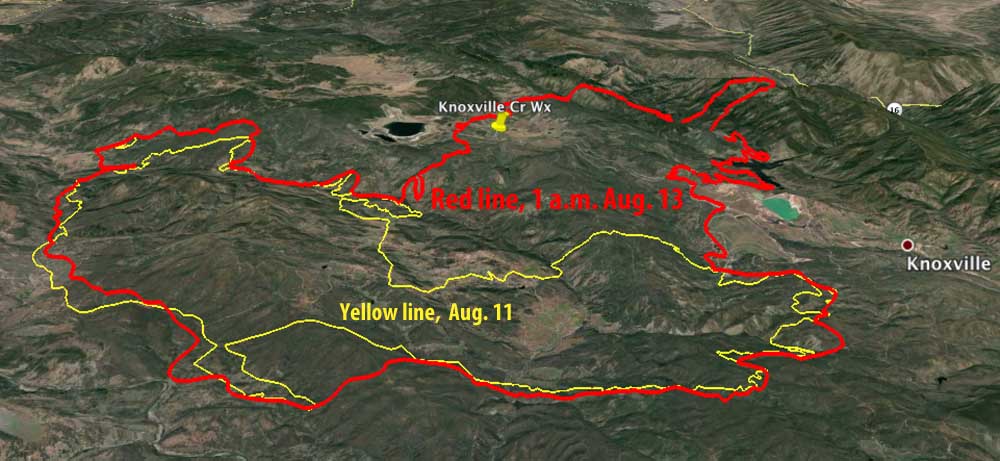
According to updates from CAL FIRE for the Jerusalem Fire east of Hidden Lake, California, the fire grew by 7,000 acres from Wednesday morning to Thursday morning, and has now blackened 23,500 acres. (See the maps above and below.)
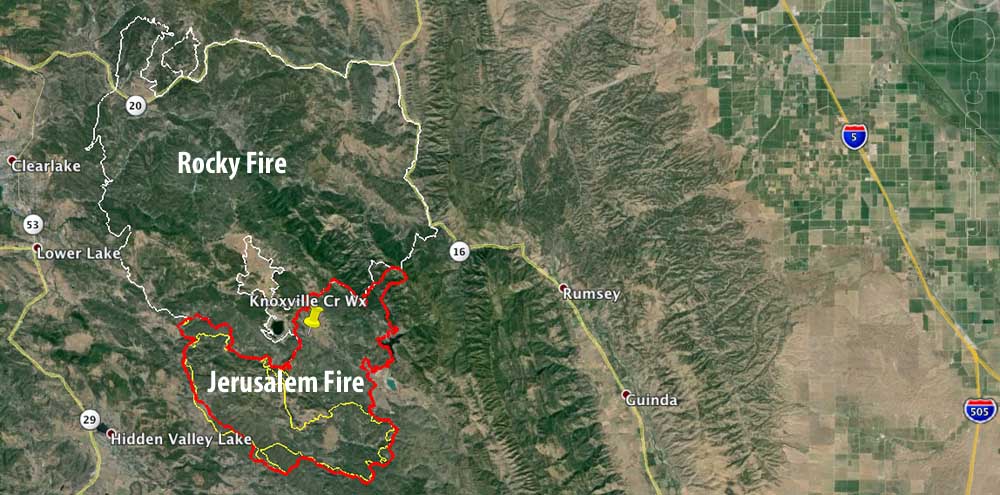
The fire crossed Morgan Valley/Knoxville Road and continued another 4 miles to the northeast. It has bumped into the south edge of the Rocky Fire, which has spread very little if any for several days, and the two fires now share a common border stretching for 13 miles.
Wind on Wednesday afternoon gusting out of the southwest at 11 to 25 mph was a major factor driving the fire. That will also be the case today after 5 p.m. with a prediction for 13 mph winds out of the southwest gusting to 20 mph.
Resources assigned to the fire include 2,053 personnel, 140 fire engines, 52 hand crews, 28 dozes, and 15 helicopters.
****
(UPDATED at 7:45 a.m. PT, August 12, 2015)
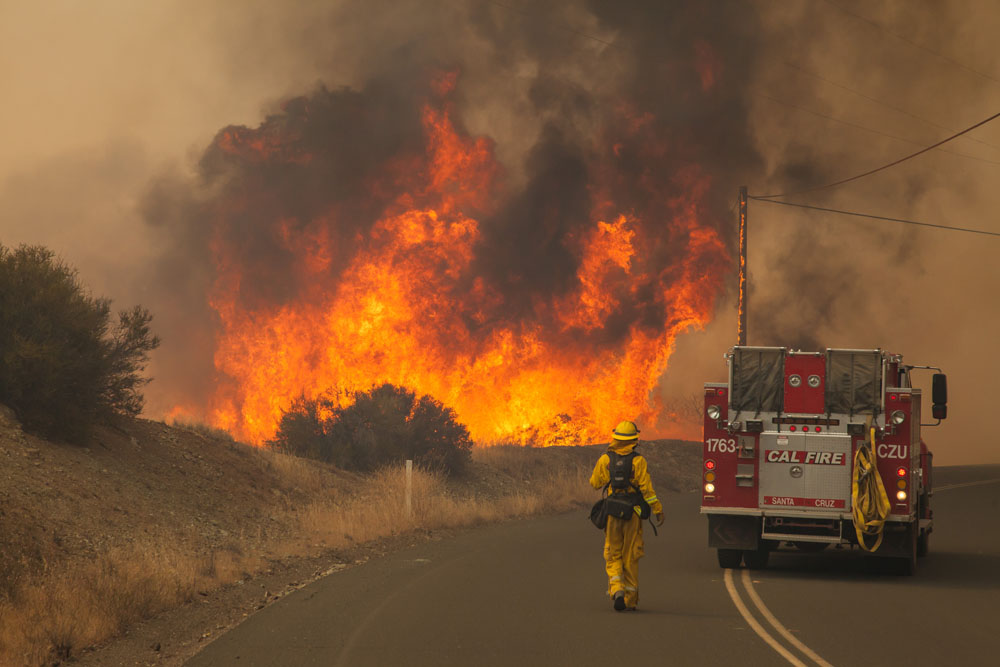
Mandatory evacuations are still in place for some areas of the Jerusalem Valley.
The fire is burning in drought-affected brush that has not burned in over 30 years. The lack of a network of roads is making access for firefighters difficult.
The fire is being battled by 1,660 personnel, 118 fire engines, 53 hand crews, 18 helicopters, 28 dozers, and a variable number of air tankers.
****
(UPDATED at 12:13 p.m. PT, August 11, 2015)
In the first day and a half of the life of the Jerusalem Fire south of the Rocky Fire and east of Hidden Lake, California, it raced across 12,000 acres. That was the size of the fire as mapped by an aircraft at 1 a.m. Tuesday morning. Rising humidity slowed the spread of the fire Monday night.
Mandatory evacuations are still in effect for some areas of the Jerusalem Valley.
The weather forecast for the area on Tuesday calls for 86 degrees, 25 percent relative humidity, and south winds of 9 mph.
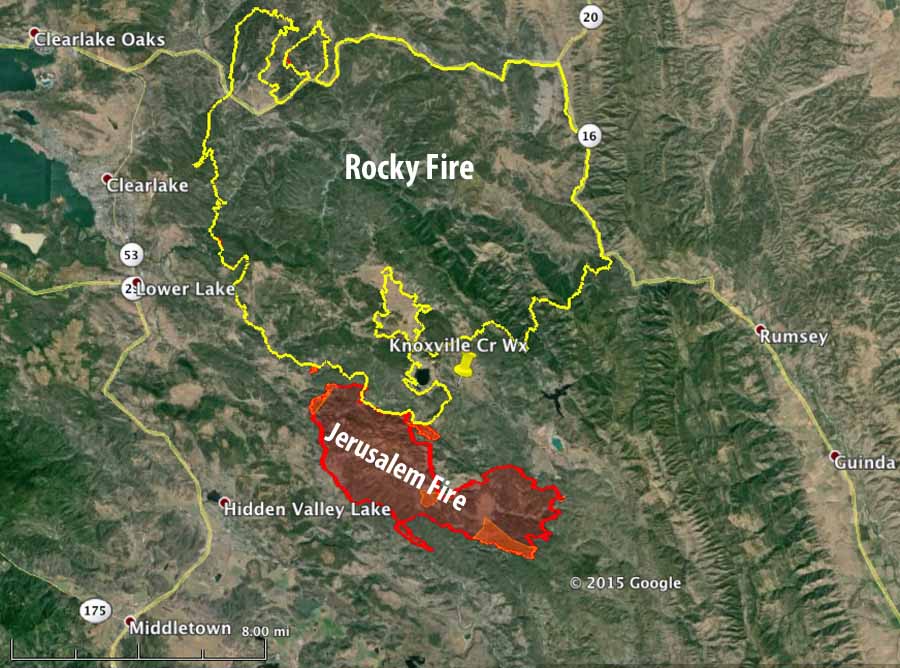
On August 9 CAL FIRE arrested Juan Ramos Silva, 49 of Lower Lake, for one count of arson and allegedly starting a backfire. Silva was booked into Lake County Jail on suspicion of violating Penal Code Section 452(c), unlawfully causing a fire to forest land, and Public Resource Code Section 4426, a person shall not set a backfire, or cause a backfire to be set, except under the direct supervision or permission of a state or federal forest officer.
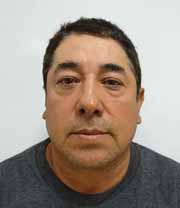
The LA Times is reporting that Mr. Silva set the backfire in order to protect his marijuana-growing operation:
…Silva started the large backfire at 5:43 p.m. Sunday, a couple of miles away from the Jerusalem fire in a rural, sparse area northeast of Middletown, said Lt. Steve Brooks of the Lake County Sheriff’s Office.
Silva told deputies he started the blaze to prevent the Jerusalem fire from reaching his home. But officials concluded he set the fire behind the marijuana grow to “protect his plants, not his residence,” Brooks said.
Silva told deputies he was a firefighter in Mexico years ago and “had attempted to conduct a controlled burn on the back of his property to protect it…”
CAL FIRE investigators are not accusing Mr. Silva of igniting the Jerusalem Fire, just of starting a new fire and a backfire.
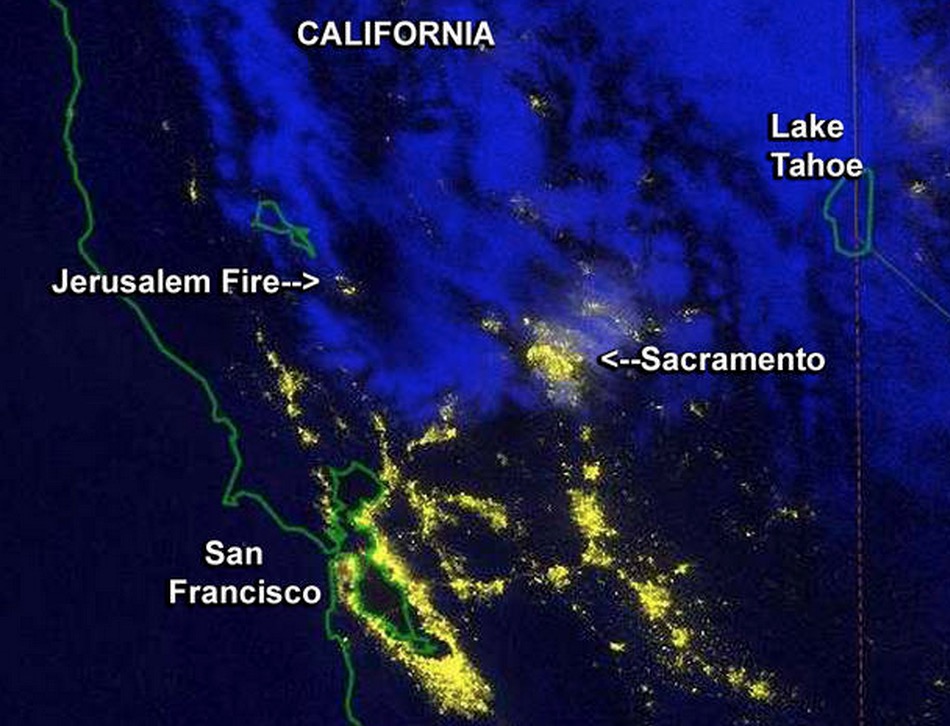
****
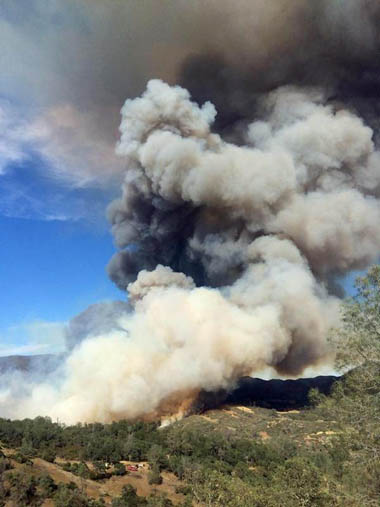
A new fire just south of the 69,000-acre Rocky Fire has burned approximately 5,000 acres in the 16 hours since it started at 3:42 p.m. PT on Sunday. The fire four miles east of Hidden Valley Lake, California, burned very aggressively Sunday evening. In a matter of hours it spread toward the northeast and came very close to merging with the Rocky Fire, which has not grown for several days. Firefighting resources are being transferred from the Rocky Fire to the Jerusalem Fire.
Mandatory evacuations are taking place in some areas of the Jerusalem Valley.
CAL FIRE, which often does not release maps of their fires, distributed this map Monday morning.
